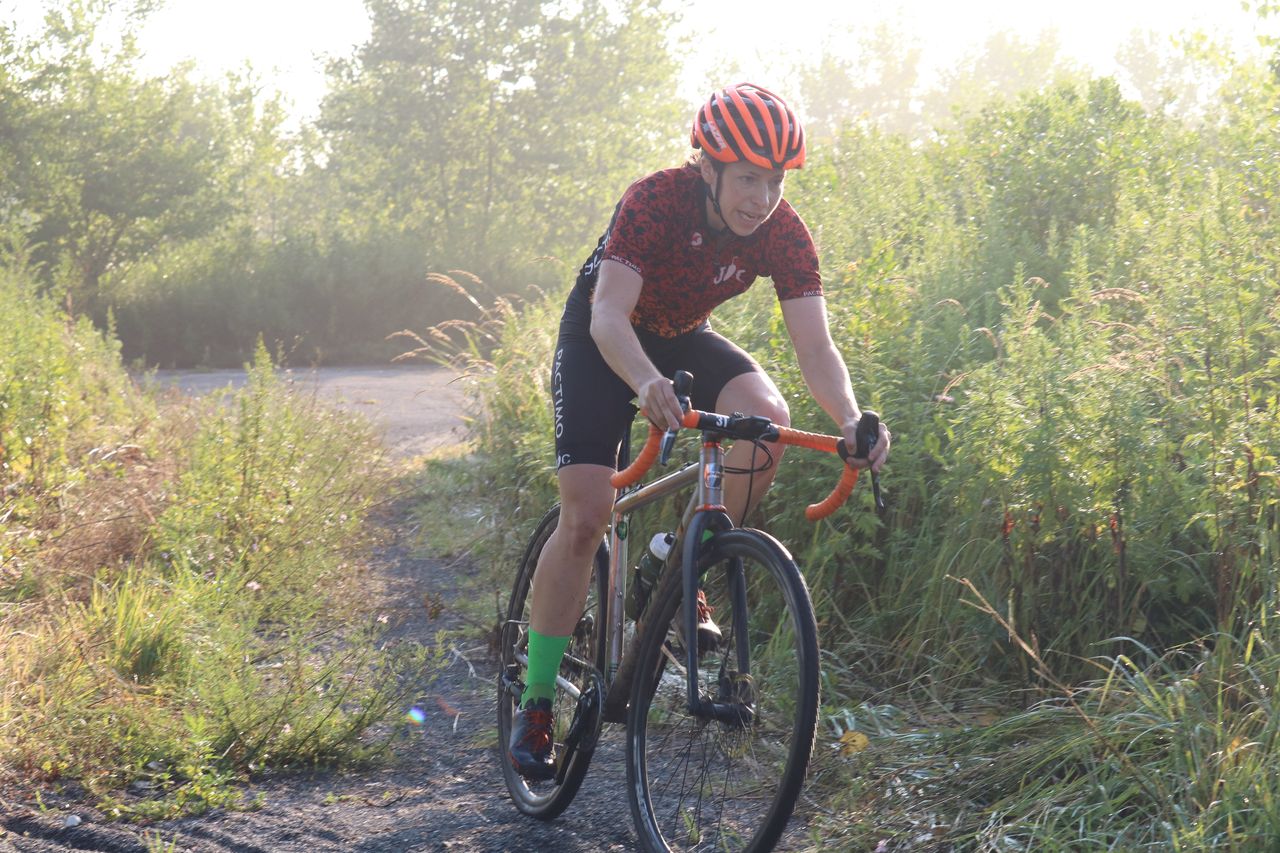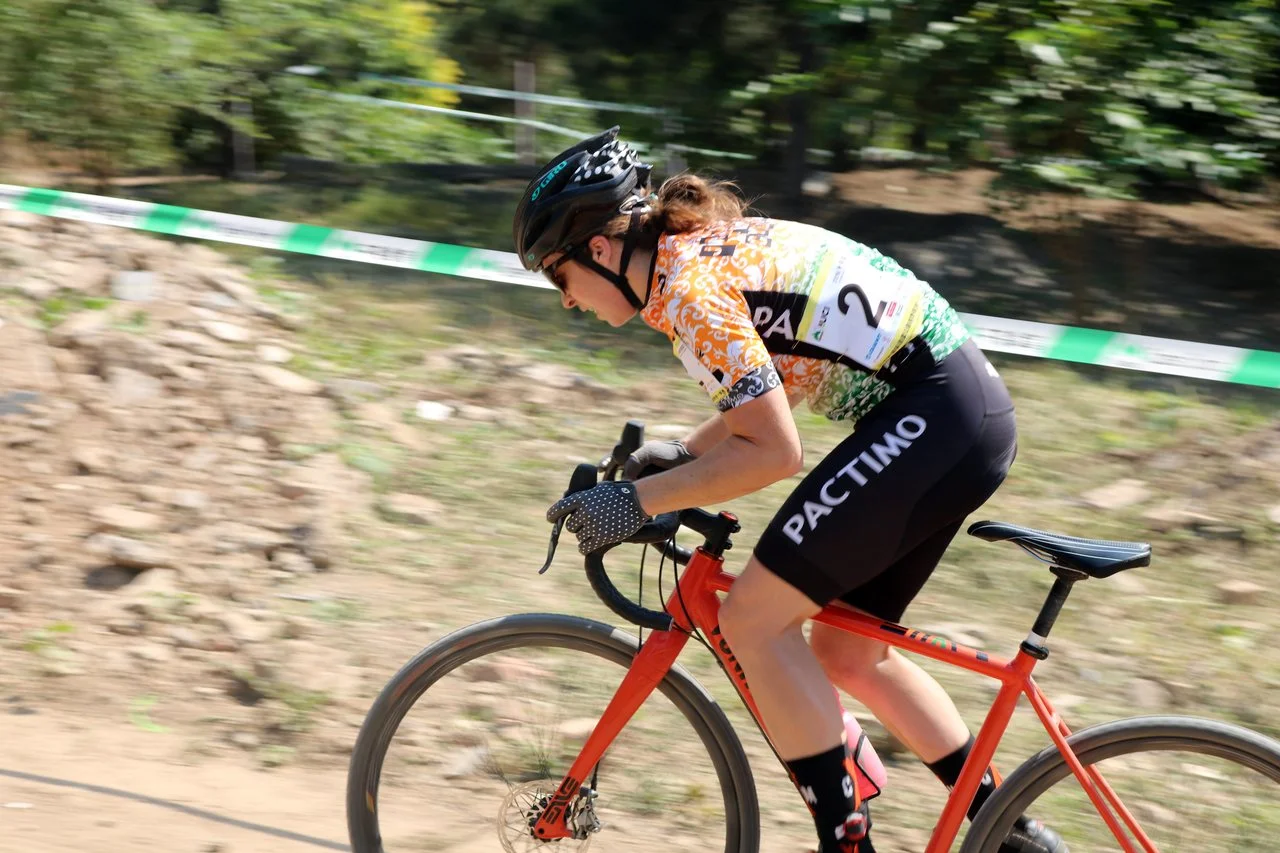May must be my favorite month of the year for chill riding. Spring flirts with summer, usually providing the best days for long base-mile riding in the New York City area as long as you can avoid the pollen. By this point every year, Kate and I already have got the spring race jitters out after throwing ourselves in a few crits, mountain bike races, and track days, and our competitive nature gives way to a desire just to go wandering across New Jersey on our bikes.
After all, Cyclocross Nationals have been over for four months, and our first official cyclocross race (which is usually the Qiansen Trophy Races in China) is almost four months down the road. So in off-season training focus, this is kind of the eye of the hurricane, where everything seems calm although we know there’s work to be done ahead.
For racers who enjoy dabbling into every discipline equally, May and June offer so many races every weekend that thinking about cyclocross would be considered just a distraction. However, for those of us who center our competitive year around autumn’s mud, late May can be a time where we feel like our purpose is adrift. This can be a great thing. Most of us need some decompression time from constant goal pushing. Also, training deep with cyclocross-specific high-intensity intervals at this time of year will mean that you might have a great September, but you may burn out by mid-October.
Conversely, when we spend too long away from being able to measure ourselves, we can start to feel like the cyclocross season is approaching way too quickly, catching us off-guard.
So if we shouldn’t be pushing ourselves with a bunch of VO2 Max intervals, but we also shouldn’t be out exclusively on coffee shop rides, what should we be doing in late-May? Here’s a few suggestions that we usually consider:
1) “Measure your ’cross excitement and plan accordingly.”
Now is the perfect time to gauge your motivation level for the season ahead. Sites like cxmagazine.com are using this time to analyze the cyclocross calendar both in the United States and abroad. Are you peering at future races with excitement, or are you feeling grumpy that people are even talking about cyclocross this early?
If you’re not busy racing in another discipline, May is the perfect month for introspection. If the stoke level is high, now is the time to start thinking about creating a training schedule, or maybe even thinking about organizing a Summer practice session with your friends.
If you are normally excited, but now feel a little down about cyclocross, now is the perfect time to think about why. Did last season get you down? Try and pry as to why this might be. If constantly taking cyclocross too seriously all season beat you up, maybe you should highlight next year with a costume Halloween race, or (gasp) try a few singlespeed races with an inexpensive converted bike.
Or perhaps, are you bummed because your previous high expectations fell flat? Consider why. Every coach worth their salt will tell you to “train to your weaknesses and race to your strengths,” but the key here is being honest with yourself about what your weaknesses are. Is your sloppy cornering bogging you down? Do you lose 10-20 places in the first lap? Do you struggle pushing a strong gear through thick grass? Does your lower back or shoulders limit you during the last half of the race?
A lot of the time, especially during the season, these are questions we try to avoid (or at least relegate to our subconscious). Nothing hurts the motivation like admitting how much you suck at a particular skill. But in late May, being this honest with yourself can be quite a liberating feeling, particularly if you can spend the next three months figuring out a way to mediate this weakness. In fact, this is usually the motivational spark that helps us look forward to our next season.
2. “Experiment with parts and positions.”
Several years ago, I got a professional fit and a new saddle in late August, only a week before my first race. The position was amazing, the advice was spot on, and the saddle the fitter recommended to me was ideal (at least when my hands were on the hoods). The only problem came with the first month of racing, where my handling felt like it slid backwards by several years.
A good bike fit is less like a magic wand and more like a nutritious diet. A great fit won’t instantly make you a great cyclocross rider, but it will help your performance and reduce your injuries in the long run. It’s something you have to adapt to. I have a nasty tendency to always race on the rivet of a saddle, and while the new saddle and fit encouraged me to a better position, I had spent the last four years racing and riding in the former position. Both in terms of muscle memory and handling, I felt like I had to relearn way too much too fast.
May or early June (or even up to July) would have been infinitely better times to test out better positions and contact points because your body has time to adjust during the heavy duty training leading up to the season.
But experimentation isn’t just limited to fit. Now is also a great time to play around with other components. Right now, Kate and I are playing around with different pedals after using the same brand for four years. We were lucky enough to borrow a few demo sets of a model we’re interested in, and we want to see what we would have to deal with in terms of clearance, spring tension, and adjustability. (On a side note, May and June in the Mid-Atlantic and New England are perfect months for testing parts in the mud).
If you’re surrounded by a friendly ’cross community, now might be a time to see if a buddy will lend you their tubeless wheels for a weekend, or there is a shop nearby that has a great demo saddle program, for a few examples.
August and early-September are great for perfecting your personal limits around corners, but May and June are better for feeling how new technology feels beneath you. Are disc brakes worth the investment in a new bike? Does a 1x drivetrain live up to the hype? Does the new AX suspension fork change the game of cyclocross? While there are plenty of great review sites to give you some direction, these questions are more personal than some bike manufacturers would have you believe, both from the view of your skill level and your wallet.
One word of warning relating to the last topic: While a new upgrade might be a fun treat, don’t treat it like it will be the savior of your next season. A set of team edition tires won’t suddenly make you ride like Wout Van Aert. Even if you flatted your clincher tubes in every race last year and are upgrading to tubular or tubeless wheels, you should still heavily invest in training your weaknesses, which in this case might be line selection, body posture, or general bike handling that is causing all of these mechanicals.
In my experience, those who treat part upgrades as the sole motivational tools for their upcoming season often get disappointed and super demotivated early in the season once they discover that they are stuck in a similar rut as the previous year.*
This time of experimenting doesn’t even have to do with taking out your wallet for professional fits or components. Maybe now is the time to simply go out one weekend with a pump (and, if you have clincher tires, a few spare tubes) and test out drastically different tire pressures. Now is a much better time to see what different pressures mean for your riding to give you a little bit of free speed for the season ahead.
* (I really hate how inappropriate it would be to make a cyclocross joke about “committing to the rut you’re stuck in” here.)
3) “Creating a routine.”
Now is usually the time where Kate and I start transforming our loose structured base miles to a more carved out routine, even if the overall intensity level remains light.
Around mid-June, we start getting really heavy into strength training for the cyclocross season, which means hitting the free weights and getting on the trainers for some single leg drills. Breaking into these interval sessions from nothing can not only be a shock to the body, but also the schedule.
Setting aside a few times per week now, even if it is only to ride in the lower zones, is a good way to test your schedule for potential flaws before the harder workouts start, as well as figure out which days are best for the family/friend/workplace schedule.
Some of the best exercises during these times don’t necessarily have to be on the bike. After all, cyclists tend to ignore a few well-balanced exercises during the season, especially stretching and core workouts. Now might be the best time to force these into your schedule, which won’t just help you build a routine, but will also help you create a more powerful pedal stroke and prevent possible injuries. (Be sure to check out our article on glute exercises for cyclists, as well as proper deadlift and ab rollout exercises for some off-the bike ideas.)
Then again, if this is your first season, or you’re simply just dying to get back on the cyclocross bike, you won’t find much of an argument from us! Sometimes, just getting a leg over your CX rig and going through the motions of dismounting, remounting, and cornering, is the best medicine for the late spring blues. You may even consider coming to one of our cyclocross practices, which will begin this Sunday, May 28th at 7:00 am at Liberty State Park, in full view of the Statue of Liberty and Ellis Island.
Looking to keep up to date with the latest blogs and news from Jalapeno Cycling? Be sure to subscribe to our newsletter to get our cycling tips delivered right to your mailbox. Also, if you are looking to start a cycling routine, and are close to the Bloomfield, New Jersey area, consider signing up for one of our cycling classes with more info to be found here.






